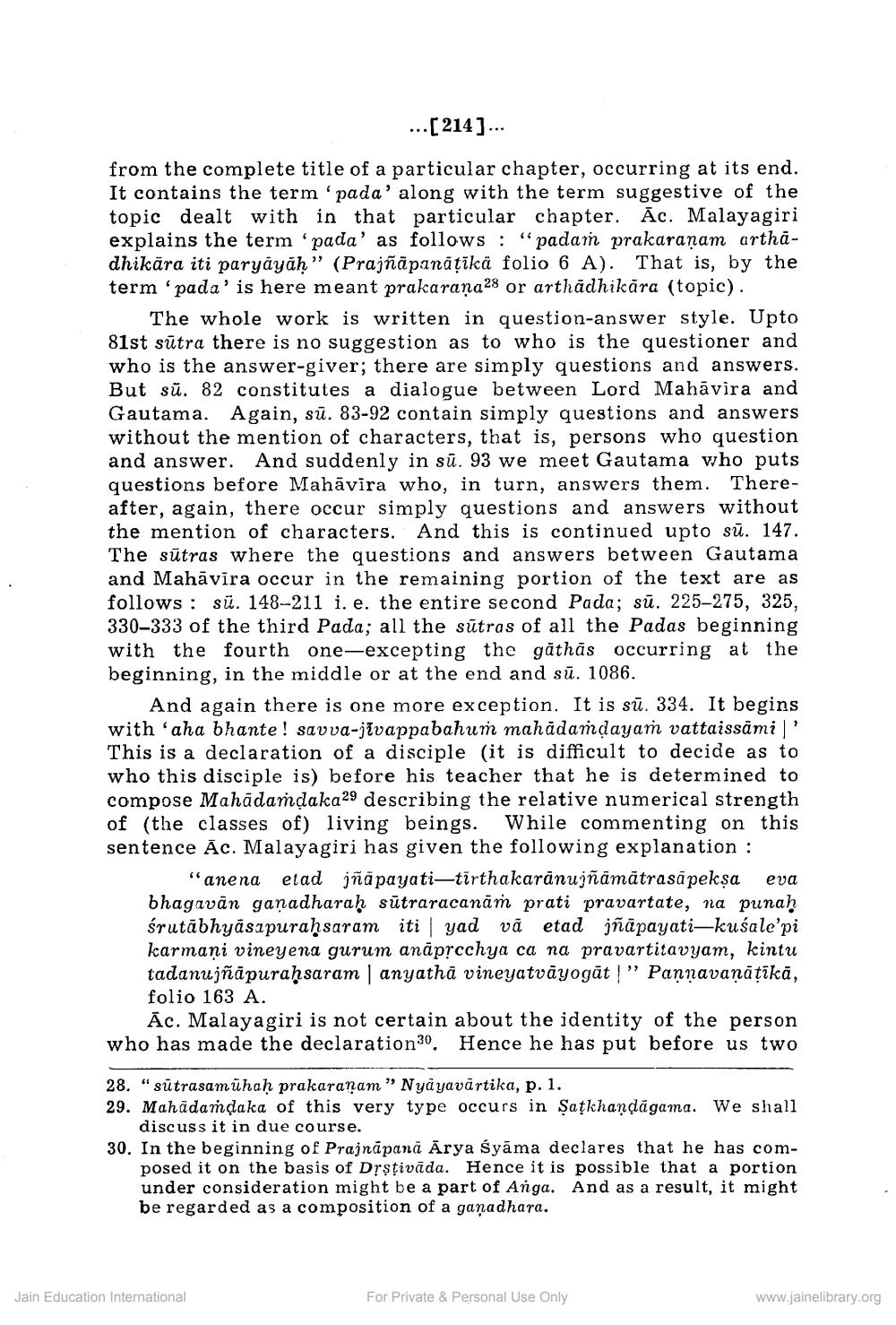________________
...[214]...
from the complete title of a particular chapter, occurring at its end. It contains the term 'pada' along with the term suggestive of the topic dealt with in that particular chapter. Ac. Malayagiri explains the term 'pada' as follows: "padam prakaraṇam arthādhikara iti paryāyāḥ” (Prajñāpanāṭīkā folio 6 A). That is, by the term 'pada' is here meant prakarana28 or arthadhikara (topic).
The whole work is written in question-answer style. Upto 81st sutra there is no suggestion as to who is the questioner and who is the answer-giver; there are simply questions and answers. But su. 82 constitutes a dialogue between Lord Mahavira and Gautama. Again, su. 83-92 contain simply questions and answers without the mention of characters, that is, persons who question and answer. And suddenly in su. 93 we meet Gautama who puts questions before Mahavira who, in turn, answers them. Thereafter, again, there occur simply questions and answers without the mention of characters. And this is continued upto su. 147. The sutras where the questions and answers between Gautama and Mahāvīra occur in the remaining portion of the text are as follows su. 148-211 i. e. the entire second Pada; sū. 225-275, 325, 330-333 of the third Pada; all the sutras of all the Padas beginning with the fourth one-excepting the gathās occurring at the beginning, in the middle or at the end and su. 1086.
And again there is one more exception. It is sū. 334. It begins with 'aha bhante! savva-jivappabahum mahādamḍayam vattaissāmi |' This is a declaration of a disciple (it is difficult to decide as to who this disciple is) before his teacher that he is determined to compose Mahādamḍaka29 describing the relative numerical strength of (the classes of) living beings. While commenting on this sentence Ac. Malayagiri has given the following explanation:
eva
"anena etad jñāpayati―tīrthakarānujñāmātrasāpekṣa bhagavan ganadharaḥ sūtraracanam prati pravartate, na punah śrutabhyasapuraḥsaram iti | yad va etad jñāpayati-kuśale'pi karmani vineyena gurum anapṛcchya ca na pravartitavyam, kintu tadanujñāpuraḥsaram | anyathā vineyatvāyogāt " Pannavaṇāṭīkā, folio 163 A.
Ac. Malayagiri is not certain about the identity of the person who has made the declaration30. Hence he has put before us two
28. "sūtrasamühaḥ prakaraṇam" Nyayavārtika, p. 1.
29. Mahadamḍaka of this very type occurs in Satkhaṇḍagama. We shall discuss it in due course.
30. In the beginning of Prajnāpanā Ārya Syama declares that he has composed it on the basis of Drṣṭivada. Hence it is possible that a portion under consideration might be a part of Anga. And as a result, it might be regarded as a composition of a ganadhara.
Jain Education International
For Private & Personal Use Only
www.jainelibrary.org




